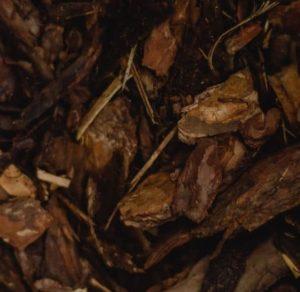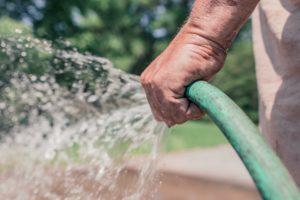Every season brings its own set of challenges for trees and shrubs, and summer is no exception. If you want to reap the fruits of summer, paying extra attention to young plants and fruit trees is essential. Here are care tips you can use to help your trees and shrubs make it through the warm weather in excellent condition!
Use Mulch
 Hot, dry summers can hurt your trees and shrubs, especially when still young and growing. Applying mulch in a layer about 5 – 10 cm thick will provide these plants with some much-needed help retaining moisture around the roots, as well as giving the tree added protection from the heat.
Hot, dry summers can hurt your trees and shrubs, especially when still young and growing. Applying mulch in a layer about 5 – 10 cm thick will provide these plants with some much-needed help retaining moisture around the roots, as well as giving the tree added protection from the heat.
Make sure you leave some space between the mulch and the tree’s base – mulch that’s piled too high up the trunk can encourage decay and pest infestations. Rather than a “volcano,” arrange the mulch in a “doughnut” around the tree.
Water Consistently
 Trees and shrubs respond better to deeper, more thorough, and less frequent watering than more regular schedules. This watering routine is necessary for younger trees; as more water seeps into the ground, the root growth is also encouraged to go deeper.
Trees and shrubs respond better to deeper, more thorough, and less frequent watering than more regular schedules. This watering routine is necessary for younger trees; as more water seeps into the ground, the root growth is also encouraged to go deeper.
When watering, aim for early in the morning. An early start minimizes how much water will evaporate, helping the tree deal with the heat as the sun gets higher in the sky.
Fertilize Properly
Fertilizer joins proper watering and mulch as the “three kings” of tree and shrub care. It’s crucial for adding nutrients to the soil, as the healthier the dirt is, the healthier the plant will be, too! The nutrients in fertilizer help your trees and shrubs develop healthy leaf and shoot systems while strengthening them against infection and pests.
Choosing a fertilizer with the right mix of nutrients – and how often you add it to the soil – is necessary. In general instances, we recommend a complete fertilizer with a mix like 16-4-8. (The numbers refer to how much nitrogen (N), phosphorus (P), and potassium (K) are in the fertilizer mix, in that order.)
Depending on your soil and the placement of the tree or shrub, more fertilizer could be required; for example, trees in high-stress areas like urban environments also tend to have higher fertilization needs.
Watch For Heat Stress & Pests
While trees are hardy and resilient, the heat can get to them. Signs of heat stress include drooping, wilting, or yellowing leaves. If you notice this problem, give your tree the right amount of water to help it recover.
Warm summer weather is also the ideal condition for pests and fungi. Pay close attention to stay one step ahead of any infestations. You might need a trained arborist to lend you their professional eye!
Try Not To Prune
The ideal time for pruning is when a tree is dormant with no leaves, i.e. in winter. In most cases, it’s good to avoid pruning unless you are removing a damaged or diseased branch. In these cases, fast, expert removal of the branch minimizes any damage and prevents it from spreading to other parts of the tree.

